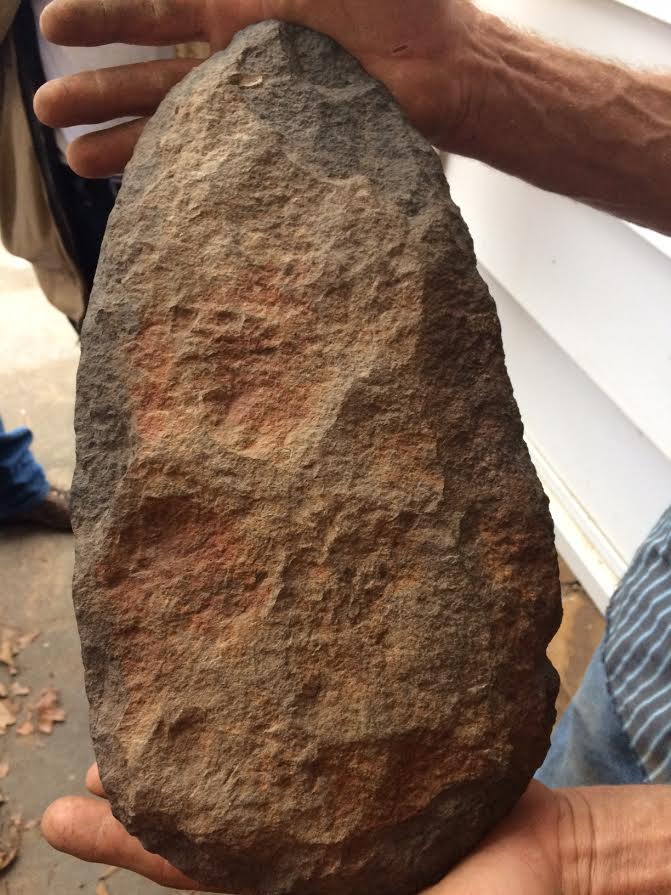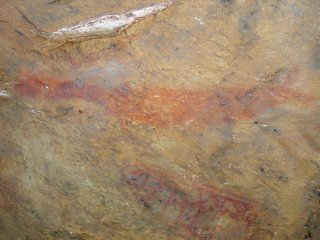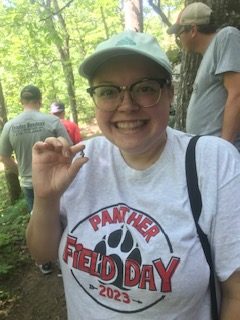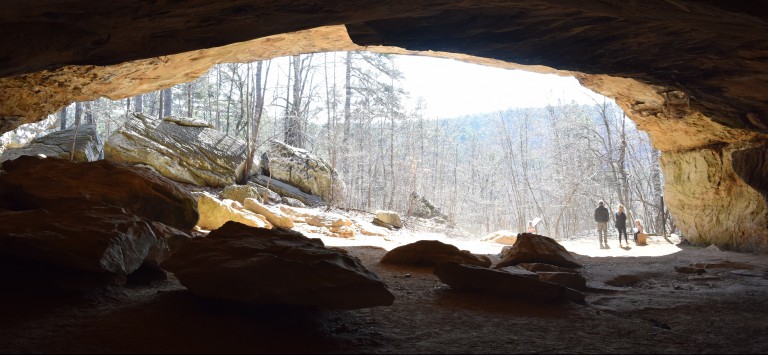By Dr. Curtis Varnell
Grasping limbs and tree trunks, the teachers carefully made their way down the steep slopes of Magazine Mountain. Turning along the base of the cliff, we arrived at Barn Cave. Once used as an animal shelter by early settlers, in the more distant past, it was a work place for Native Americans. Providing an historical perspective to the teachers, I explained that the grind stone and several arrow heads located at the visitor center were originally found on-site but the only items remaining was a number of chips and pieces of flint. Within minutes, I was proven wrong! It is always neat to find remains of our past but finding a perfectly shaped bird point is beyond exciting. Locating animal bone fragments and other arrow head chips, the teachers discovered the excitement of archelogy.


The original inhabitants of Arkansas did not have a recorded language but they have left a story of their existence in sites across the state. The work of Dr. George Sabo of the University of Arkansas, as well as that of other archeologists, has provided us with an understanding and appreciation of these early Arkansans. The University of Arkansas Museum in Fayetteville contains thousands of artifacts that have been collected over the years and provides a viable interpretation of our past. Even though visiting one of the museums or even the sites at Parkin or Plum Bayou is exciting, nothing can take the place of actual discovery.
Petit Jean Mountain rock house cave is an awesome site. Located just above Cedar Falls, the large grotto extends far back into the side of the cliff. Pictographs of paddle fish, starbursts, and warriors in headdress cover the ceiling walls and are easy to locate. Even more exciting discoveries awaited as I climbed into some of the small caves along Seven Hollows trail and found pictographs located on the walls and ceilings.
Just east of Cass, a rock cliff face is covered with pictographs. The soft red-sandstone rock is etched with rock carvings and art that is said to be more than a century old. What inspires a person to climb high on a cliff or cave wall and dangle as they write their ancient form of graffiti on the wall? The pictographs, interspersed with more recent names and dates, cover the face of the bluff. Arrowheads, pottery, and grindstones have been found throughout the area, some dated as over one-thousand years old.
Recently, a neighbor brought over several artifacts that he had found. Although secretive about the find, he did confirm they were found in the River Valley near Ozark. I was astounded by what looked like a large arrowhead. The hard-rock face of the was chiseled and faceted to sharp edges, leaving a tear shaped point a foot and a half long and weighing probably twenty pounds. An expert later told me it was the largest shaped plow-point that he had ever seen. From the size and from the location found, I surmised it had to have been from the Cherokee time period when draft animals could have pulled the hand-hewn plow. An exciting find and an exciting experience to touch our past.

Native Americans entered Arkansas thousands of years ago. Many of the more ancient tribes, associated with de Soto and other explorer’s early travels through the state, died out as result of disease and warfare. In historic time periods, the Caddo, the Osage, the Quapaw, and finally the Cherokee are the tribes associated with the state. All of these left of wealth of evidence of their life and history. Most areas of the state yield arrowheads, pipes, pottery, and rock art as evidence of their existence. Disturbing a site and removing items is not the best way to preserve our past but, unfortunately, there are hundreds of private collections around the state with no evidence of providence.
Finding those remains excites our imagination and creates within us a desire to understand the mysteries of the life lived by our predecessors in this state.








